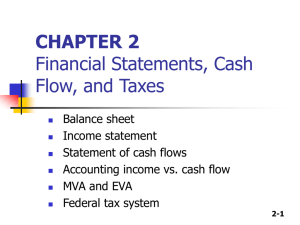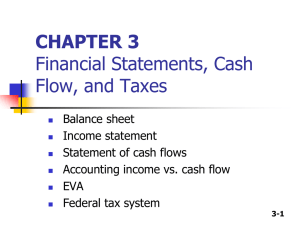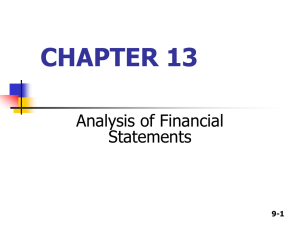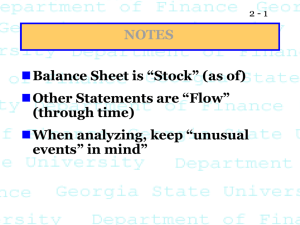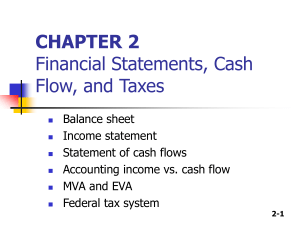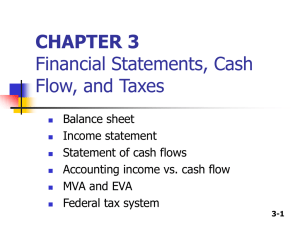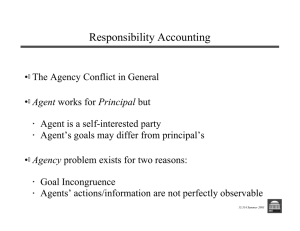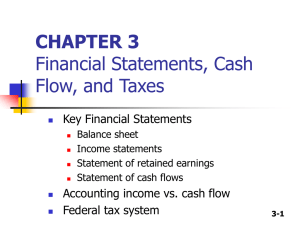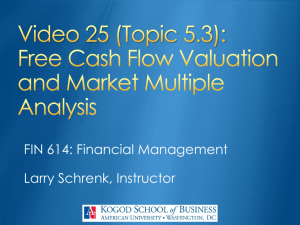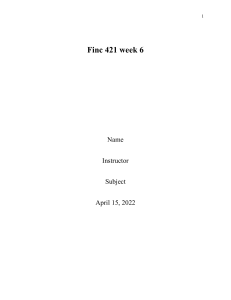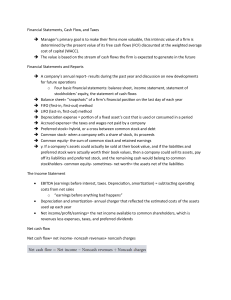Chapter 2 Financial Statements, Cash Flow and Taxes Financial Statements and Reports :
advertisement
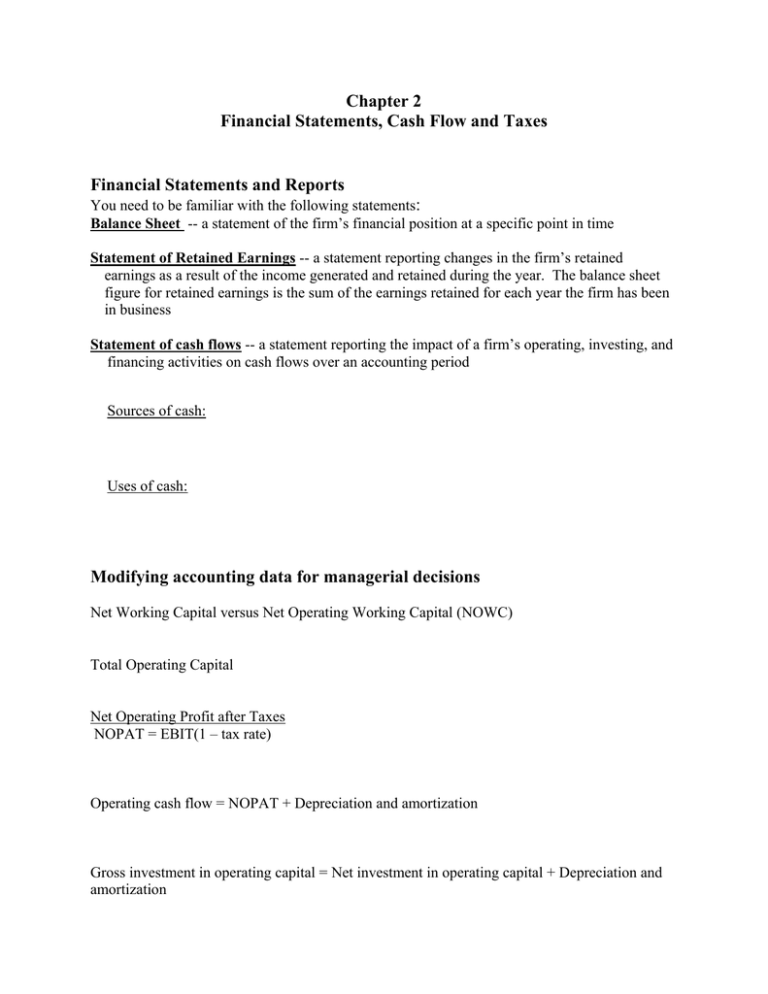
Chapter 2 Financial Statements, Cash Flow and Taxes Financial Statements and Reports You need to be familiar with the following statements: Balance Sheet -- a statement of the firm’s financial position at a specific point in time Statement of Retained Earnings -- a statement reporting changes in the firm’s retained earnings as a result of the income generated and retained during the year. The balance sheet figure for retained earnings is the sum of the earnings retained for each year the firm has been in business Statement of cash flows -- a statement reporting the impact of a firm’s operating, investing, and financing activities on cash flows over an accounting period Sources of cash: Uses of cash: Modifying accounting data for managerial decisions Net Working Capital versus Net Operating Working Capital (NOWC) Total Operating Capital Net Operating Profit after Taxes NOPAT = EBIT(1 – tax rate) Operating cash flow = NOPAT + Depreciation and amortization Gross investment in operating capital = Net investment in operating capital + Depreciation and amortization Free Cash Flow Cash flow actually available for distribution to all investors after the company has made all investment in fixed assets, new products, and working capital necessary to sustain ongoing operations FCF = operating cash flow – Gross investment in operating capital (also FCF = NOPAT – Net investment in operating capital) MVA and EVA MVA is the difference between the market value of the firm’s stock and the amount of equity capital investors have supplied MVA = (shares outstanding)(stock price) – (total common equity) EVA is the value added to shareholders by management during a given year EVA = NOPAT – after-tax dollar cost of operating capital = EBIT(1-T) – [(Total investor-supplied operating capital)(After-tax cost of capital)
